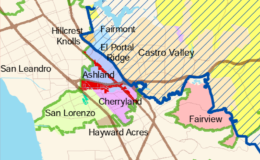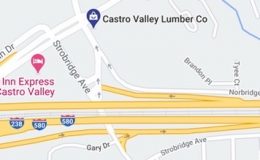Very informative.
Bob
New Federal rules void MAC cell phone tower ruling
- By : Michael Baldwin
- Category : Governance, Local Control, MAC
One particular issue that the Castro Valley Municipal Advisory Council has been particularly passionate about over the past few years has been cell phone transmission towers. They have usually been successful at convincing companies to disguise their poles to avoid visual blight. In fact, at the October 13th MAC meeting, the council voted against recommending approval for upgrading a tower because the tower’s owner refused to camouflage it from sight. Then the project then went to the West County Board of Zoning Adjustments on December 10th for a final decision. The BZA disregarded the MAC and approved the request. Another example of of the BZA ignoring the MAC you say? Not so! It turns out our Federal government has intervened and has made the MAC and BZA effectively powerless in stopping projects like this.

Cell phone towers are despised throughout Castro Valley. Both their aesthetics and potential health effects have been called into question by the MAC and many concerned citizens for years. One particular campaign in 2009 protesting an unauthorized tower on Crane St. even resulted in a 45 day moratorium on tower construction in the unincorporated areas. Over the years, the MAC in particular has been successful in requiring some type of disguise for all new towers, and most requests to change existing towers. Alameda County does now have design guidelines for new towers and, the MAC and planning department have been dilligent in mandating appearance language in all conditional use permits (CUP’s). A CUP is required for a new tower, or changes to an old one and all CUP’s in Castro Valley come before the MAC who gives a yes/no reccomendation to the County on if they should be approved.

The tower up before the MAC in October was for a tower located on the hill behind Pete’s Hardware store on Castro Valley Blvd. The tower has been there since 1991 and the owner was requesting permission to change out the antennas at the top of the pole for newer models. This was his third time before the MAC, and previously the MAC had requested that camoflauge be included with the refit. Since 1991 no attempts have been made to make it pleasing to the eye.
The MAC denied reccomendation of the permit, citing the County design guidelines:
“Freestanding telecommunications towers shall be located and designed to minimize visual impacts. Although not all towers will be required to do so, monopoles in areas where adverse visual impacts cannot be avoided (as in some commercial areas), shall incorporate appropriate techniques to camouflage, disguise and/or blend them into the surrounding environment, or disguise them as a piece(s) of art/sculpture, flag poles, telephone poles, light standards, or other interesting visual forms that would not be considered an adverse visual impact.”
The motion passed unanimously, sending it on to the BZA for final approval. MAC Chair Crawford was concerned that the reasons for the MAC denial whould not be heard by the BZA and stated that:
“All too often the CVMAC recommendation is not read and staff does not bring up the recommendation(s). It is an on-going problem. If the BZA hears the Council’s concerns, perhaps they will respond in a different manner.”
When the CUP came up for approval at the December 10th BZA meeting, the County Planning department reccomended approval, seemingly ignoring the MAC’s advice. BZA Vice Chair Kathy Gil noticed this immediately and protested, asking of County staff:
“…so originally the decision was to deny, based on the Castro Valley MAC, and now it’s approval? Why is that? Why the change? The reason I ask is that we always want to try and do what we can to support the Castro Valley MAC.”
County staff responded that it was important to note for the record that:
“some clarifications in the law have been distributed since the MAC meeting which lead to a somewhat different regulatory framework today than at the time of the MAC meeting.”

The “clarifications in the law” referred to by the County is order #14-153 issued by the United States Federal Communications Commission (FCC) which was adopted on October 17th, 2014 -three days after the MAC decision. The new FCC order is based on an interpretation of language deep within the 2012 “middle class tax relief and job creation act” meant to expand the reach and reduce the cost of broadband deployment throughout America. (This act received a “yes” vote from Congressman Pete Stark, who represented our 15th District at the time.)
When this order was passed, it was brought to the attention of the County planning department, (by whom we are not sure,) specifically section 1.40001. This section specifically requires any State or local government to approve any request for facility modification as long as it does not substantially change the physical dimensions of the tower.

In this case, the antennas that the applicant was looking to install were only slightly larger than the ones being replaced so it fell short of the FCC’s definition of “substantial change” (Incidentally, the order spends one and a half pages defining what constitutes “substantial change.”)
In the end, the BZA voted to approve the modification but specifically added language to the record saying that they were only approving it because of this particular clause in the FCC order and County’s advise that they had no choice but to approve it.
This FCC order could have similar effects throughout the United States. Although as an unincorporated area we have limited control over these type of projects, many incorporated cities have extremely strict guidelines and ordinances in place for existing cell towers and changes to them. Section 1.4001 effectively vetoes any local board, commission or governments (incorporated or not,) rulings or conditions of change. The tower owner can pretty much do whatever he wants, without acknowledging community concerns.
This new development now makes it doubly important that we rigorously control the construction of any new cell towers, because once they are there, all bets are off.


